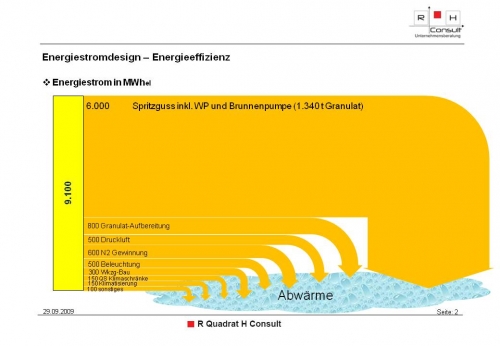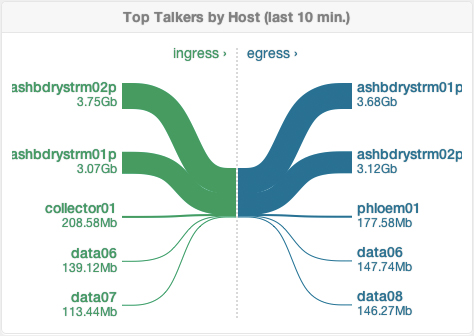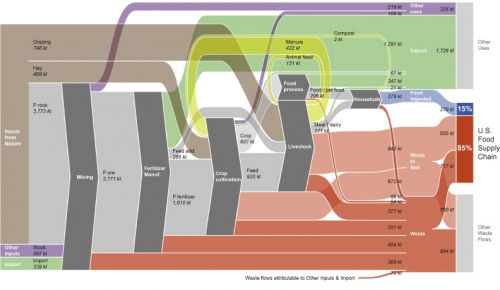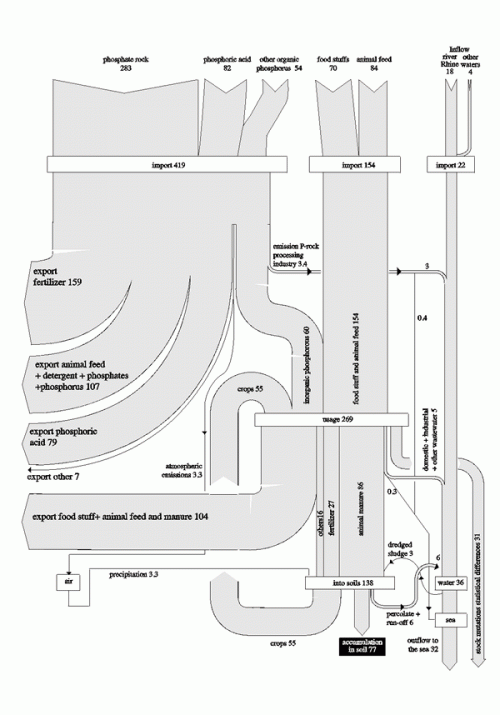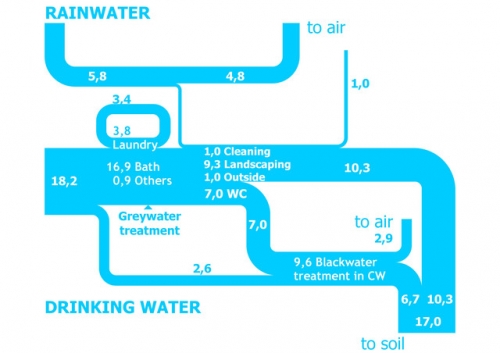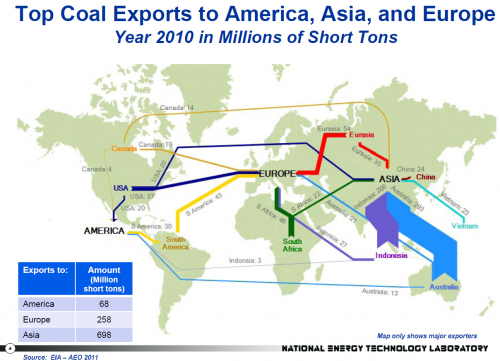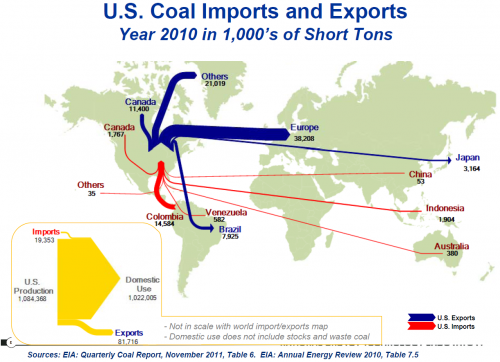As promised in this post on U.S. 2010 Energy Flows here are some other Sankey diagrams from a July 2012 publication by Eric Shuster, NETL/DOE. These diagrams show world trade flows for coal.
The first one features the top coal exporters and their 2010 exports of coal to the regions America, Europe and Asia. This does not include domestic production, but just export. Indonesia and Australia are clearly the main exporters. Unit is in Mio short tons.
The other coal Sankey diagram is for U.S. coal imports and exports in 2010. Here the unit is in 1,000s of short tons, hence the two must not be directly compared. Also, the inset of the yellow arrow for domestic production in comparison to U.S. import/export is not to scale with the other flows shown on the flow map. In fact, all the blue Sankey arrows appear as a small export flow (81,716) in the yellow Sankey miniature, and all red flows on the world map are summarized as the tiny import flows (19,353).
The U.S. is primarily using its domestic coal and still able to export the surplus.
Stay tuned to see the world’s natural gas flows from the same publication
